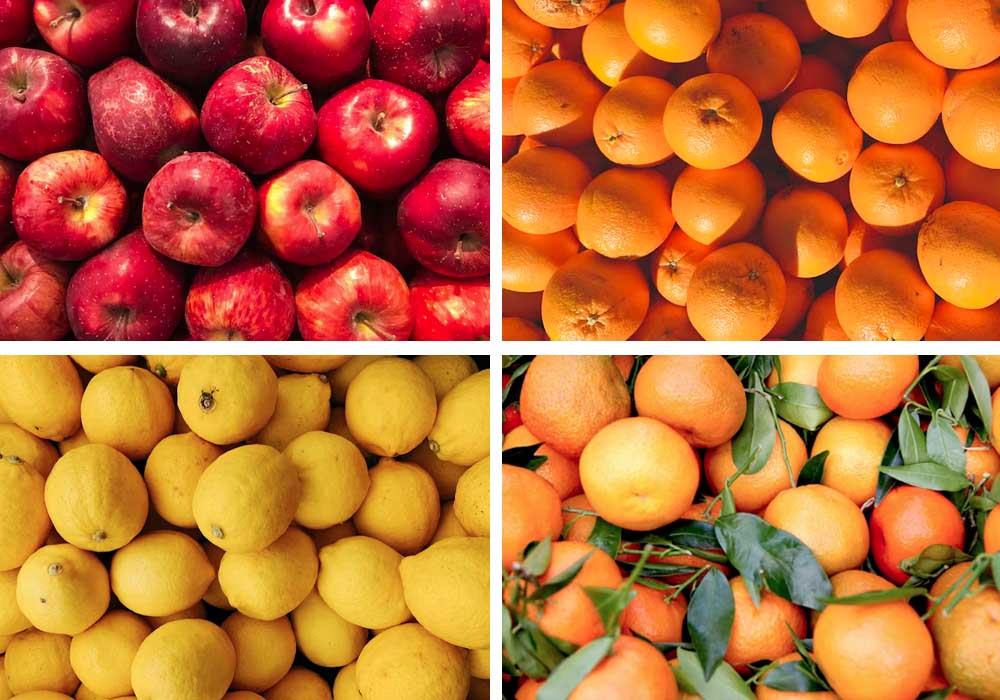Apple Sorting Machine
Orange Sorting Machine
Lemon Sorting Machine
Mandarin Sorting Machine
Grape Sorting Machine
Strawberry Sorting Machine
Blueberry Sorting Machine
Mango Sorting Machine
Cherry Sorting Machine
Avocado Sorting Machine
Pineapple Sorting Machine
Kiwi Sorting Machine
Pomegranate Sorting Machine
Dehydrated Fruits Sorting Machine
Dehydrated Apple Sorting Machine
Dehydrated Banana Sorting Machine
Dehydrated Mango Sorting Machine
Dehydrated Strawberry Sorting Machine
Dehydrated Coconut Sorting Machine
What is Fruits Sorting
Fruits sorting involves the advanced process of separating various types of fruits based on their color, size, shape, and other optical characteristics using high-precision color sorters. This technology ensures that only high-quality fruits free from defects, discoloration, or impurities make it to the final product. With increasing consumer demand for premium quality produce, fruit sorting has become an essential step in food processing and packaging industries.
Modern fruit sorting solutions cater to a wide variety of produce including apples, oranges, berries, cherries, grapes, and other fresh fruits. These machines help farmers and packers maintain consistency, improve yield, and meet international quality standards. Whether it's removing damaged fruits or sorting by ripeness and color grades, automated sorting systems provide accuracy and efficiency that manual methods cannot achieve.

How Fruits Sorting Works
Fruit sorting machines utilize high-resolution CCD optical sensors and advanced imaging technology to analyze each fruit as it passes through the system. The sensors capture detailed color and surface information, detecting even the slightest variations in ripeness, bruising, or defects. When an undesirable fruit is identified, the machine triggers a high-speed air ejection or mechanical diverter to remove it from the production line.
The sorting process begins with feeding fruits into the machine, where they are individually presented to the inspection system. Advanced algorithms process the images in real-time, distinguishing between acceptable and defective fruits with remarkable precision. This ensures only the highest quality fruits proceed to packaging, significantly reducing waste and improving overall product value in the marketplace.
Core Features and Benefits of Fruits Sorting
Modern fruit sorting solutions offer unparalleled accuracy in detecting and removing defects, discolored fruits, and foreign materials. These machines can process hundreds of fruits per minute, significantly outperforming manual sorting in speed and consistency. The ability to customize sorting parameters allows processors to adapt the machine for different fruit types and quality requirements, making it a versatile solution for diverse horticultural products.
Beyond quality control, fruit sorting machines contribute to food safety by eliminating potentially contaminated produce. They help reduce labor costs while increasing throughput, providing a quick return on investment for packing facilities. The gentle handling systems ensure fruits maintain their fresh appearance and quality throughout the sorting process.
Technical Specifications of Fruit Sorting Machines
High-performance fruit sorters typically feature full-color CCD cameras with resolutions capable of detecting minute defects on fruit surfaces. Processing capacities range from 2 to 10 tons per hour depending on the model and fruit type, with accuracy rates exceeding 99%. These machines often incorporate smart learning algorithms that improve detection accuracy over time as they process more produce.
Modern sorters come equipped with user-friendly interfaces for easy operation and parameter adjustment. Many models feature multi-spectral imaging systems that can assess internal quality parameters like sugar content. The machines are designed with food-grade materials and easy-clean surfaces to meet strict hygiene standards in food processing environments.
Applications of Fruit Sorting Technology
Fruit sorting technology finds application across numerous horticultural sectors, from large apple packing houses to berry processing facilities. It's particularly valuable for premium fruits where appearance and quality significantly impact market value. The technology also plays a crucial role in organic fruit processing, where visual quality standards are exceptionally high.
Beyond fresh produce markets, fruit sorters are used in processing plants for making juices, dried fruits, and other value-added products. The adaptability of these machines allows them to handle everything from large melons to delicate raspberries with appropriate configuration changes.
Buying Guide
When selecting a fruit sorting machine, consider the specific types of fruits you'll be processing and their typical defect profiles. Processing capacity requirements should match your production volume, while machine flexibility becomes important if you handle multiple fruit varieties. Look for machines with gentle handling systems suitable for delicate fruits and easy-to-clean designs for food safety compliance.
Advanced features like internal quality assessment and automatic calibration can provide long-term value. Consider the availability of local service support and the machine's compatibility with your existing packing line. Many manufacturers offer demonstration units to evaluate a machine's performance with your specific fruit products.
Maintenance Guide
Regular maintenance is crucial for optimal fruit sorter performance. Daily cleaning removes fruit residues and juice that could affect optical sensors and mechanical components. Periodic calibration ensures sorting accuracy remains consistent throughout different harvest seasons.
Scheduled professional servicing helps identify wear components before they fail and maintains the machine's precision over time. Keeping detailed maintenance records can help predict when parts need replacement and ensure uninterrupted operation during critical harvest periods.